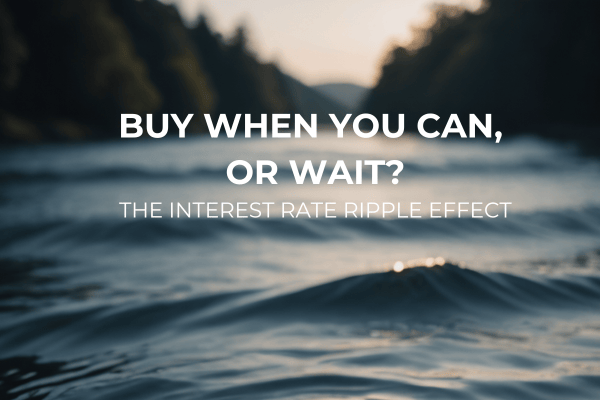How Interest Rates Impact Home Prices and Affordability
Interest rates play a crucial role in the housing market, influencing home affordability and property values. Whether you are a first-time buyer, a seasoned investor, or a homeowner looking to sell, understanding how interest rates affect the cost of housing can help you make informed financial decisions.
How Interest Rates Affect Monthly Payments
When interest rates rise, borrowing money becomes more expensive. Mortgage lenders charge interest on home loans, and a higher interest rate means higher monthly payments for the same loan amount. For example, if you take out a $1,000,000 mortgage at a 3% interest rate, your monthly principal and interest payment (excluding taxes and insurance) would be around $4,216. If rates rise to 6%, that same loan would have a monthly payment of approximately $5,996—a significant increase.
Because most buyers have a budget constraint, higher interest rates reduce their purchasing power. A buyer who could afford a $1,500,000 home at a 3% interest rate may now only qualify for a $1,200,000 home at a 6% rate due to the higher monthly payments. This shift can lead to a slowdown in demand, which can put downward pressure on home prices.
How Interest Rates Impact Home Values
Interest rates and home values have an inverse relationship. When rates are high, affordability declines, leading to reduced demand and slower price appreciation. Conversely, when interest rates drop, buyers can afford larger loans with the same monthly budget, increasing demand and often driving home prices higher.
For example, during periods of low interest rates, bidding wars become more common as more buyers enter the market with increased purchasing power, especially in San Francisco. This competitive environment can push home values up, benefiting sellers. On the other hand, when rates rise sharply, sellers may have to lower their asking prices to attract buyers who are now dealing with higher borrowing costs.
Is Timing Your Home Purchase Based on Interest Rates the Right Strategy?
While interest rates influence affordability, factors such as job stability, personal financial health, long-term investment potential, and market conditions in your local area should also weigh heavily in your decision. Waiting for rates to drop could mean missing out on a great home or a growing market. In some cases, the cost of waiting—due to rising home prices or increased competition—can outweigh the benefits of securing a lower rate later.
Additionally, refinancing options in the future could help mitigate the impact of initially high interest rates. If a home fits your needs and aligns with your budget, locking in a purchase now could be more beneficial than waiting indefinitely for the "perfect" interest rate.
What Happens When Interest Rates Go Down?
When interest rates decline, several things tend to happen:
-
Increased Buyer Demand: Lower rates make homeownership more affordable, prompting more buyers to enter the market.
-
Higher Home Prices: With more buyers able to afford homes, competition increases, which can drive prices up.
-
Refinancing Opportunities: Existing homeowners may refinance to take advantage of lower rates, reducing their monthly payments and freeing up disposable income.
-
Stronger Housing Market Activity: More home sales, faster transactions, and increased real estate investments occur as borrowing costs decrease.
The Bottom Line
Interest rates have a direct impact on housing affordability and market trends. When rates rise, affordability decreases, leading to slower price growth or even price declines. When rates fall, demand increases, pushing home values higher. However, focusing solely on interest rates may not be the best strategy when deciding whether to buy a home. Evaluating your financial readiness, the real estate market, and long-term goals should be your top priorities.
Whether you are buying, selling, or refinancing, keeping an eye on interest rate trends can help you make the best financial decisions in today’s dynamic real estate market.
If you have questions about how current interest rates are affecting your local market, reach out—I’d be happy to help!
Scott Conway




